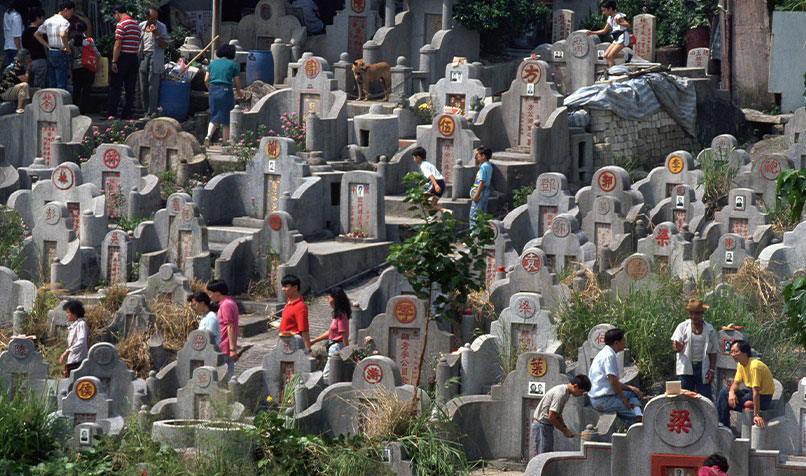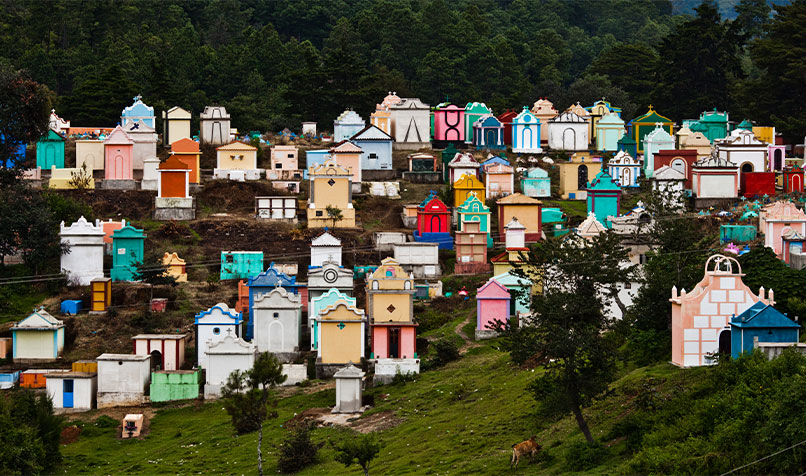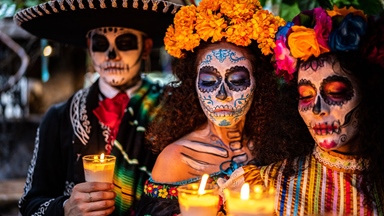Loading component...
At a glance
Funerals to mark the death of a loved one are a common practice across the globe. However, funeral costs cause financial hardship for 26 per cent of people who arrange a loved one’s funeral, says the Australian Funeral Industry: State of the Nation 2021 report.
While 67 per cent of respondents believe Australian funerals are overpriced and 45 per cent say the funeral industry needs to change, 63 per cent of people who arrange funerals for loved ones do not seek a quote before agreeing to a funeral service.
Of the people who do seek a quote, 36 per cent are too overcome by grief to obtain more than one quote. Of those who do seek a quote, 36 per cent are too overcome by grief to seek further quotes.
Similarly, the last Australian Seniors Cost of Death report, released in June 2019 before the pandemic disruption, notes that just one in four seniors had funeral arrangements in place. At the time, the average cost of burial was A$9055 and cremation was A$6334. Almost a third of respondents who had paid for a funeral experienced financial hardship as a result.
With the current cost of living crisis, caused largely by high inflation and interest rates, it is becoming more important to consider pre-planning a funeral with care. This may include doing thorough research before committing to a plan.
The global market for deathcare services is estimated at US$118.3 billion (A$179 billion). It is projected to grow by almost 60 per cent to US$189.8 billion (A$286.6 billion) by 2030, according to the 2024 Death Care Services: Global Strategic Business Report.
Pandemic disruption
While it would be easy to assume that the pandemic created a surge of demand for funeral directors across the globe, the opposite was true in Australia, says Martin Tobin, founder of Funeral Direction, a Melbourne-based funeral consultancy.
“The volume of funerals went down,” Tobin says. “Not dramatically, but it was noticeable across Australia.
People were isolating. There were fewer cases of flu and diseases that typically affect vulnerable people. The overall number of deaths declined.”
However, data from the Australian Bureau of Statistics (ABS) says there was excess mortality, defined as “the difference between the total number of deaths in a specified period and the expected numbers of deaths in that same period” during some of the pandemic, particularly during the Omicron stage. The ABS also notes that COVID-19 is “still a significant contributor to increased mortality”.
During lockdown, the funeral industry faced unique challenges. Caps were placed on the numbers of people who could attend funerals – at one stage, that figure came down to 10 per event. This triggered greater expectation around the online streaming of funeral proceedings.
Despite this, the notion of the funeral of the future as a digital celebration of a person’s life has not caught on, Tobin says. “The general feedback I am getting now from industry is that, if anything, it has worked the other way.
“When rules are imposed on people, when they are told only a certain number of people can come, it makes people realise how important funerals are.
“A lot of families wanted to have their circle of friends around them, and they were deprived of this, so it has bounced back quite quickly.”
Radical reinvention

Change has always reshaped death care, and this is only likely to accelerate, Tobin says, albeit at a pace that respects the wishes of the living and the memories of their loved ones.
Globally, there has been dramatic movement in death care in response to the greater call for sustainability, although it currently only exists in small pockets.
Dutch business Loop Biotech has developed the “world’s first living coffin”.
The Loop Living Cocoon™ is grown, over the course of a week, from “local mushrooms and upcycled hemp fibres”. Once in the ground, it biodegrades in 45 days.
Another product from the same business, is the Loop EarthRise™. This is an urn grown from mycelium, which are the fungal threads from which mushrooms typically sprout. The urn can be used as an ornament at home, in the garden or in a forest.
"We are not going to host a rock concert, but we do host jazz on some afternoons in summer, for people to be engaged in a way that is non-traditional but still respectful."
Aquamation, or alkaline hydrolysis, the process South African Anglican bishop Desmond Tutu chose, is considered a gentle and more sustainable alternative to burial or cremation. It involves placing the body of the deceased in a pressurised, metal cylinder in a mix of water and an alkali, such as potassium hydroxide. The cylinder is heated to 150°C, which liquifies all but bone. The bones are typically dried in an oven then crushed into dust.
Valuable cemetery land is also being repurposed to enable graveyards to do more than just hold bodies. In Spain, in the small city of Santa Coloma de Gramenet, the top of the grave walls are lined with solar panels that provide power for up to 60 homes.
In Ballarat, Victoria, a feasibility study is currently being commissioned to carry out a similar project, although on a smaller scale. The solar power is intended to power the tools, irrigation systems and vehicles used on site.
In other parts of Victoria, larger changes are under way. What were once unwelcoming, overgrown and sometimes spooky places of mourning are being transformed into spaces that community members willingly use for much more than saying a final farewell.
Your guide to estate planning essentials for SMEs
Respectful recreational spaces
People often think Helen Tuton’s job, as horticultural assets manager of Southern Metropolitan Cemeteries Trust (SMCT) in Melbourne, must be depressing and morbid. Nothing could be further from the truth, she says.
“People say, ‘that must be spooky, scary or gross’, but for me, to be in a position with an organisation that is really championing the activation of space, and that really understands that cemeteries are public, open space, is just great. The opportunities that cemeteries present are exciting,” Tuton says.
Cemeteries in Victoria, as in most of Australia, are overseen and legislated by state government. The challenge is that all cemeteries eventually run out of space. Under Victorian legislation at least, people are interred in perpetuity.
“Once the site is full, it is full,” Tuton says. “Trying to acquire land that is large enough and appropriate enough for new cemeteries is quite challenging.
“It can relate to community pressure. It can be about location. Environmental factors play into it as well. There are boxes that must be ticked to find a tract of land for a new cemetery.”
Cemetery managers globally are facing the same challenge, Tuton says. Many have realised that the historical and cultural aspects of a cemetery must cross over with the need for green, recreational space in urban areas.
SMCT’s Springvale Botanical Cemetery has water features and open green spaces between the burial plots. People visit the cafe for a coffee with friends. Bird watching groups wander the gardens, picnickers spread blankets under trees, and joggers and cyclists alike use the pathways and roads.
“For us, it is about respectful use,” Tuton says. “Springvale is a very active, working cemetery. There are multiple burials and ceremonies here per day.
“In addition to that, we offer a cafe. We have very active community groups who might do historical walks. We have a garden group that does some work at one of our cemeteries. A lot of people engage in passive recreation such as dog walking. There are numerous citizen-science activities like pollinating counts, bird counts, etc.”
Springvale Botanical Cemetery and Bunurong Memorial Park also offer a Community Care and Wellbeing program, for people dealing with grief.
“It is that respectful innovation we are interested in,” Tuton says. “We are not going to host a rock concert, but we do host jazz on some afternoons in summer, for people to be engaged in a way that is non-traditional but still respectful.”
Trends in death care

Funerals were similar across communities and faiths 50 years ago, Tobin says. There would be a ceremony at a place of worship followed by a burial or cremation, then a memorial gathering.
Within this structure, there was little innovation until about three decades ago, when the industry recognised a trend away from religious elements and toward greater creativity around how a person’s life was remembered.
“There was a lot of creativity around where the service was held, the music, the colour and so on.” Tobin says.“There was a trend toward celebratory, life-centred funerals and away from funerals centred around the person’s faith.”
At today’s funerals, it is becoming more common for there to be no body in the room, to have orders of service featuring images of the person throughout their life, and to have presentations with videos, photos and music.
“It is not game-changing. This is, by necessity, a very conservative industry, but it offers people what they desire,” Tobin says.
“Funerals are one of the oldest human activities. Ever since man came out of the cave and started living in communities, they started burying or cremating bodies to remember the person. Most of the traditions today come from that human need to stop the clock and do something when someone among us dies. Funerals are not going to go away or change dramatically unless we stop dying.”
Why you should have a digital will
Redefining Malaysia death care
Innovation in death care is happening across the globe. In Malaysia, private funeral and bereavement business Nirvana wants to redefine death care.
“In Australia, some of the operators are mainly funeral industry players who have very little business in bereavement,” says Jeff Kong, group CEO at Nirvana. “Australia is a very different, regulated market where, in many states, you cannot have a private operator managing a cemetery.
“We have funerals and bereavement, and our bereavement proportion is much higher than the funeral itself.”
Bereavement care includes pre-planning, death reporting, documentation, embalming and restoration, through to grief counselling and operation of private memorial parks.
Nirvana’s market is one in which pre-planning of funeral and bereavement processes is becoming more popular.
The average age of the organisation’s customer is as low as 40, meaning the organisation has had to innovate around the expectations of a younger customer.
“People can hedge against inflation if they’re buying today,” Kong says.“They also have peace of mind that they will not burden the next generation if anything happens to them. If something happens to them, the family just places a call to an operator, then an entire team handles the rest.”
Nirvana cemeteries are landscaped spaces that exude luxury, balance and peace. The company’s “columbaria” – buildings in which funerary urns are kept – are hotel-style with air conditioning, lavishly appointed rooms, cafes, prayer rooms and VIP customer lounges.
Planning and proactivity: the future funeral
Cale Donovan, the co-founder of Bare, an Australian online funeral company, outlines the changes reshaping death care.
Where does opportunity lie in the funeral space?
“The biggest opportunity comes from a macroeconomic shift, the transition from the silent generation to baby boomers. We are seeing a generational change, as baby boomers are taking a more proactive role in their funeral and end-of-life planning. They are more open about preparing in advance, are less traditional in their preferences and want increased personalisation in their funerals.”
Where is innovation coming from?
“The major innovation we are seeing is creating omni-channel experiences for families, which combine technology with exceptional human interactions. In combining the two, we can provide an incredibly personalised, supportive journey for all people experiencing the death of their loved one.”
How does sustainability and reduction of carbon emissions fit in?
“Sustainability is increasingly important. We are seeing a rise in families who make sustainability a priority when farewelling a loved one.”

